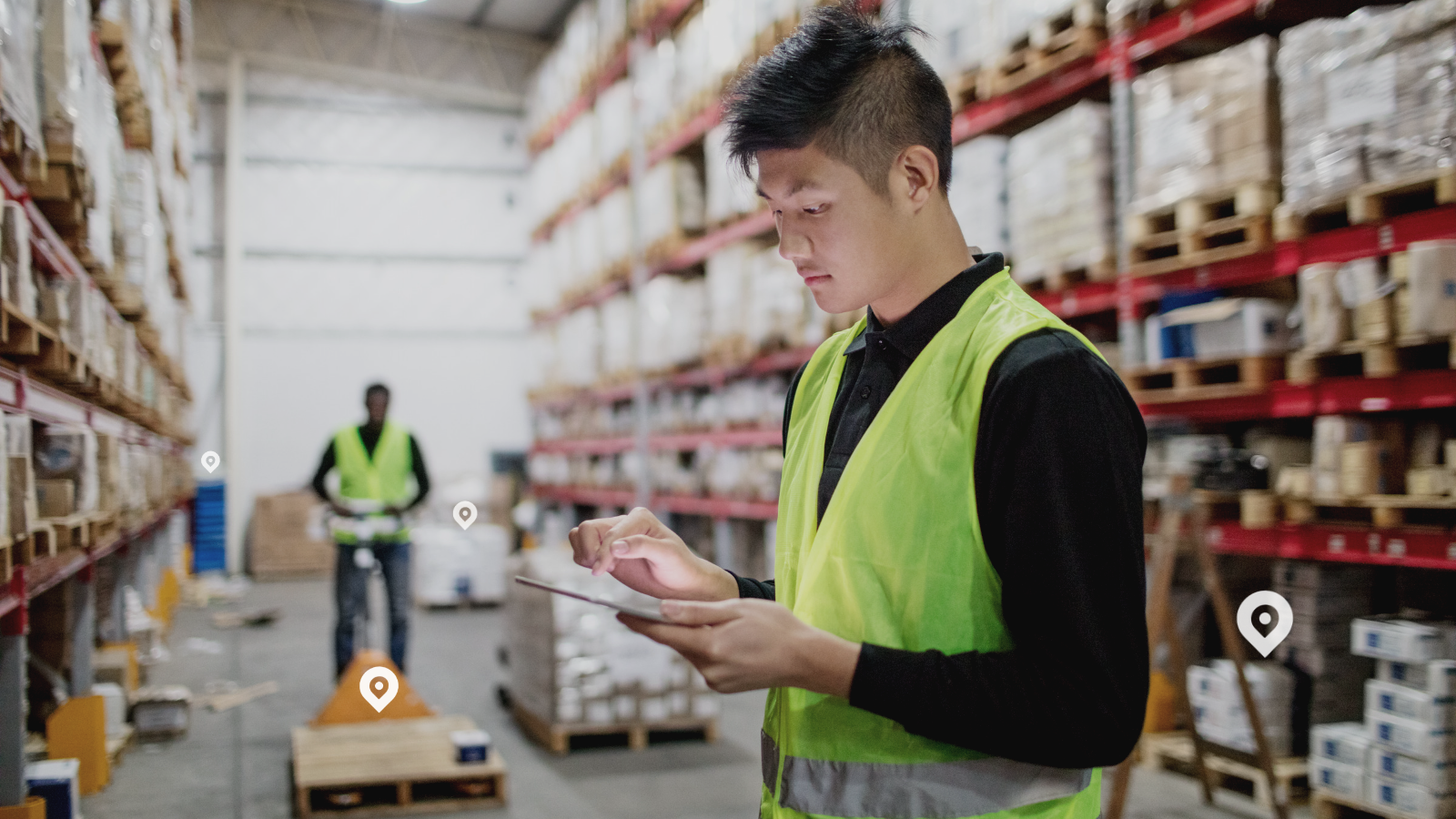10.05.2023
It’s all about that attitude: Digitization of logistics processes

Logistics is all about efficiency. Every day, a large number of pallets and packages arrive in warehouses and others have to leave at the same time. In between are the goods that are being stored, sometimes for a short time, sometimes for a long time. Keeping track of all this is not easy and costs time and money. A tracking system helps to know where a package or a pallet is at any time. What’s more, it even makes it possible to keep track of when the goods go in or out of the warehouse. Real-time asset tracking provides the perfect basis for analysis and numbers-driven process optimization.
Adopting digital solutions always means upheaval within an organization. Existing processes are analyzed and questioned, problems are uncovered, and responsibilities may be redistributed. All of this can lead to dissatisfaction among employees, whose commitment is needed more than ever, especially when implementing new systems. Successful digitization projects show that the more employees are involved in the digitization process and the more they can contribute their ideas and experiences as users, the smoother the implementation of the digital process will be.
Let’s take an example: In a warehouse, pallets and packages come in and out every day. However, some of them stay in the warehouse longer than planned due to other delays, such as payment, onward transportation, etc. In order to keep track of all the goods in the warehouse, a kind of inventory has to be taken regularly.
The inventory could look like this in a analog way: Pallets need to be searched and found, then picked off the shelf with a forklift. Another worker scans the delivery note on the pallet, and the data from the scan is manually entered into the ERP system. The whole process is time consuming. We know from various projects that this effort can easily add up to 900 hours/year. This inventory process is even more inefficient for pallets or packages that remain in the warehouse for an extended period of time. The information about when they arrived in the warehouse must be recorded manually on a recurring basis in order to bill customers for additional storage costs. That’s because each pallet occupies physical space that is not available to other shipments. The frequent movement of pallets also puts them at risk of being damaged by forklifts, for example. In the worst case, the packaging is so damaged that the goods have to be repacked. This in turn ties up human, material and time resources.
Now we know what a predominantly analog inventory process in a warehouse costs. So how can a digital tracking solution reduce these costs and save resources? The first point is definitely the saving of search time. When pallets and packages are located in the warehouse to the nearest meter, there is never a need to search for goods, and it is always possible to track which package is where. When goods are received, the pallet and the Bluetooth tag are linked, for example by barcode scanning, in a kind of “check-in”. The time stamp of this matching provides retrospective information about incoming and outgoing goods as well as the storage time in between. The tag and pallet are decoupled either by clicking on the smartphone or PC, or automatically as soon as the pallet is in a certain zone (e.g. loading zone) for a certain time.
A logistics process digitized in this way not only saves time and money, it also frees up staff and reduces process steps and potential sources of error. For example, information about how long a pallet has been in the warehouse (unintentionally) can be read in real time. This information can be used to calculate additional storage costs, for example.